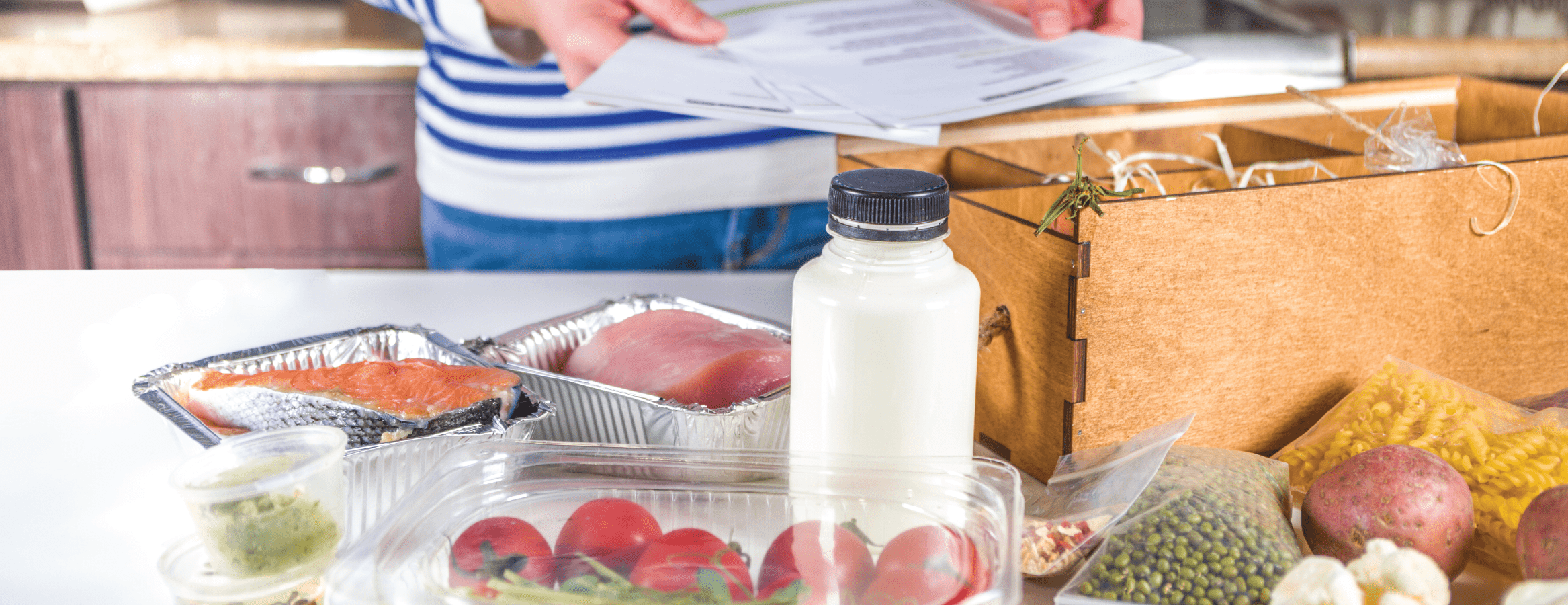One of the big trends we saw during the pandemic was meal kit delivery to homes. These kits come with a recipe and all of the ingredients to make a meal. Many of these companies have also expanded into grocery delivery, blurring the lines between meal kits and grocery retailers.
Will Business Slow?
With pandemic restrictions easing and shopper insights and consumer buying behavior changing, it remains to be seen if meal kit delivery companies will continue to grow. During the pandemic, researchers at Dalhousie University said in a November 2020 study that 45.4 percent of respondents surveyed said they ordered food online in some form or another in the previous six months, up from just under 30 percent pre-pandemic. Of the 7,290 people surveyed online, 12.8 percent said they were getting meal kits during the pandemic. However, many are tired of cooking from home after months of lockdown and want to go out to a restaurant and have a meal served to them. Goodfood, a large meal kit delivery company, saw a drop off from the 56-per cent spike in revenue it saw in the same quarter the previous year. The number of net new subscribers to the meal kit service slowed from the previous quarter, marking the first time that’s happened in the company’s history.
Challenges
Meal kits will have to compete with various players in the future. The Washington Post notes that grocers, such as Kroger who purchased Home Chef, are offering prepared meals, as well. The increasingly digitized food industry (food delivery apps, Instacart) is a continuing threat. Large grocery retailers also started offering their own prepared meals during the pandemic, both with their own recipes and ingredients and by partnering with restaurants to give families a chance to recreate their favorite dining out experience from their own kitchens.
What about one of the newest consumer trends — sustainability? One of the biggest complaints with meal kits is the packaging and the waste it creates. It remains to be seen if concerns around sustainability and over-packaging will hurt business or if these will be overlooked because safety and convenience are still more important. Some companies are trying to tackle waste by delivering in plastic bags. If the customer is not home, the delivery truck has the packaging on hand to repack in an insulated box and leave on the front doorstep. Other companies have take-back programs where they will pick up the empty packaging and reuse it although this practice has been suspended due to the pandemic and safety concerns. There’s no doubt that any efforts to curb packaging waste will come at a cost that will drive meal kit prices up.
Affordability could also be an issue. According to data from Mintel, 63% of potential customers in the U.S. cited price as the reason for not using meal kits. It tends to skew towards people with incomes of $50,000 and above.
People also don’t want to be tied down. The Meal Kit subscription-based model operates on the assumption that people want to cook at home but that doesn’t work for people who want to be spontaneous and go out to eat at the last minute.
On the one hand, many developed skills for cooking at home with meal kits during the pandemic and gained a lot of confidence in the kitchen. But now that people are more experienced and their path to purchase has gone offline, what’s to stop them from going to the grocery store and buying the ingredients on their own to prepare a favorite meal kit recipe?
There tends to be a seasonal element to meal kits as well. The start of the year sees increased demand as people try to fulfill resolutions to eat healthier or during back to school where more of a cooking routine comes into play.
Opportunities
While grocery stores are starting to offer prepared meal kits, it works the other way as well. Some Meal Kit companies are expanding into the grocery delivery market as a way to diversify their offerings. As an example, Goodfood has built a v commerce grocery store with more than 1,000 unique items, with plans to continue growing its stock. Ten percent of Goodfood’s revenue is currently tied to the non-meal kit side of the business, a figure the company expects to double by the end of fiscal 2022.
The holidays are another opportunity for meal kit companies by offering special holiday meal kits. The industry has a real opportunity to make an emotional connection with consumers not only on the big holidays but also for the micro-holidays they are looking forward to as well.
Weight management systems are on the rise as consumers try to lose weight after the lockdown. Specialty-diet meal kits catering to gluten-free, paleo or plant-based interests are doing well. There is an opportunity for well-structured meal kits that help people meet their dietary and weight-loss goals.
Another way Meal kit delivery companies can adapt to post-pandemic behavior is by offering lunch kits to workers returning to the office and kids returning to school. Some companies, such as Sunbasket, are adapting and offering two types of boxes at once: meals that you prep and cook yourself with the ingredients provided, and ready-made meals that you simply heat and serve.
The Future
The larger, established companies will have an easier time they have the capital to make investments in marketing, logistics and sustainability, further increasing efficiency and bringing down costs. Smaller players will have to carve out a niche and many are. One Fine Dine, a new entrant into the space, morphed through the pandemic to survive, moving from catering for private jets to luxury meal kits. Crowd-funded All Plants uses an entirely vegan menu while TV chef Rick Stein is offering high-end, luxury box meals.
Despite the challenges of understanding buyer behavior, low customer retention rates and high marketing costs, meal kit companies have elevated their position and place in homes everywhere. Their agility and ability to pivot their value to the consumer continue to be their core strengths. CPG companies would be wise to watch what is happening in the meal kit arena as they just might be the new breed of “influencer” that food brands are looking for.


